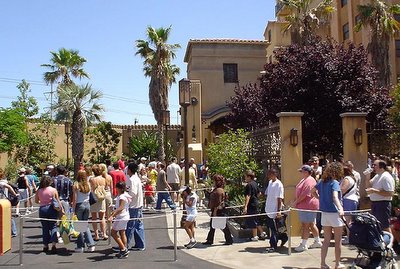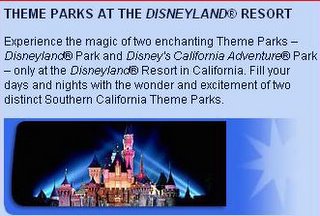“Until a character becomes a personality it cannot be believed. Without personality, the character may do funny or interesting things, but unless people are able to identify themselves with the character, its actions will seem unreal. And without personality, a story cannot ring true to the audience.” - - Walt Disney

Onscreen or at the parks, the Walt Disney hallmark has always been specificity of character.
The most popular animated icons have lasted in the popular imagination through the decades by virtue of their indelible personalities. They aren’t just drawn or generated images; they are as real, as complete (in a cartoonish, caricatured way) as you or I.
Donald and Goofy are two separate and distinct personality types - - the quick-tempered loser and the dimwitted fool, respectively - - their thinking, their reactions, their mannerisms unique and identifiable in any situation.
The Seven Dwarfs, while virtually all the same height and weight, were individuals, not a faceless collective, each with a specific personality represented in their names and a distinct way of behaving thanks to skillful story, design, character animation and voice characterization. For example, we all know Doc has an absent-minded stutter and Dopey is a mute clown.
TinkerBell is a naughty minx. Snow White is a twinkly, dreamy airhead. Mickey is a spunky hero. This is why we love them. We know them and their ticks instantly.
One senses immediately when one of the Disney characters is “out-of-character” - - behaving in a manner inconsistent with their established quirks and mannerisms. Immediately they cease to be believable… or funny.
With the development of Disneyland, Walt Disney World, Disney on Parade, Disney on Ice and other live theatrical presentations, the notion of character consistency and personality became as important to the flesh-and-fur versions of the Disney characters as their animated personas.
Disneyland became the place where these characters “lived” in the popular imagination. For years, all was well, with former animation talent guiding much of the design and storytelling of park attractions and shows. The characters were the old cartoon friends we all grew up with. They never changed.
But in recent years, attempts to “update” characterizations, to make shows more “relevant and compelling” - - to make the Disney characters reflect the times or the interpreter’s own social message, have led to huge changes and disconnects in characterization. And the entertainment factor has suffered as a result, with audiences failing to recognize the personality they know from the classic films.
Instead, reinterpreted storylines and mannerisms and intentions and tone have often left the characters floundering like merchandising mannequins with no relatable persona… or found them coming across as condescending mimes in a Disney themed character suit.

One of the worst examples of this trend could be seen in the “Snow White: An Enchanting Musical” show at Disneyland (now on hiatus).
Snow White “reinvented” the well-loved personalities and thematic subtext of the familiar Walt Disney version to accommodate a politically correct "children's theatre" vision.
Instead of a two-dimensional vain and jealous Queen fearing sexual competition and replacement by the budding adolescent beauty (an archetypal theme for the ages), she became a one-dimensional harpy trying to stop love from blooming in her kingdom.
This change is more resonant... how?
Not only had her motivations changed, but the Wicked Queen now acted like the Wicked Witch of the West, cackling and shrieking, waving her arms and hamming it up, running around the stage... totally out-of-character. Everyone knows the real Queen simmers and smolders with understated power, cunning and narcissistic self-absorption.
And the dwarfs? An announcement before the show said “Hello, this is Doc…” and went on to give the usual show spiel and audience instruction, but in plain dry formal English, no stuttering, no malapropisms… Hey, that wasn’t “Doc” at all - - it was just a fella. Where was the comedy? Why even say the announcer was “Doc”?
As a group, the dwarfs no longer expressed their exaggerated personalities much, but seem to be a faceless line-up of communal workers.
And Snow White? She was no longer the sparkly, corn-fed, overstated Shirley Templish caricature of Hollywood and Disney myth, but a preachy mommy with a normal voice and self-awareness of her childhood abuse and lack-of-trust-issues. She orders her animal helpers to take a “time out!”
Did the creators of this show even lower themselves to watch the movie? In the press, they certainly boasted that they had improved on the original and added depth and layering. Meaning: they made it more politically correct. One can detect more-than-a-whiff of contempt for both the root material and the intended audience. Charming.
But the proof is to be found in the audience’s pudding of reaction: Except for the very youngest of tots, the show sits there on the Videopolis stage like a poisoned apple pie. No laughing, no joy, no charm. This can't be “Walt Disney’s” Snow White at all.
While there is always room for artistic interpretation in style and presentation, the characters themselves need no help from the analysts. We already know who they are and what they do. We come to Disneyland to visit these old cartoon friends in person, not to become reacquainted with progressive doppelgangers who stayed too long in therapy.
While this unfortunate trend has also been seen in the animated sequels and videos (Goofy depressed and self-reflective?), the parks have really dropped the ball. Poor Donald hardly ever loses his temper anymore. Can that be gloomy ol' Eyore doing a sprightly jig? (Well, this IS the age of Prozac).
And what's up with Mickey and Minnie? They express an almost drug-addled nervous-giggling-and-energy-projection habit. They appear all-keyed-up, jangly, jittery and neurotic. It's a long, long way from the farmhouse or the band concert.
Everyone seems to be talking-oh-so-carefully (or contrarywise, shrieking) down at us… spelling out the gags… patronizing the public.
By and large, the walkaround characters do a much better job of staying in-character than those in the scripted shows, where higher powers with a disregard for characterization hold sway. The low-paid walkaround actors seem to have better personal instincts for who the characters are than the Theatrical Entertainment department honchos.
Where, oh where, are our cool and funny old friends, so confident, corny and casual in their quirks?
We loved them. We miss them.

























